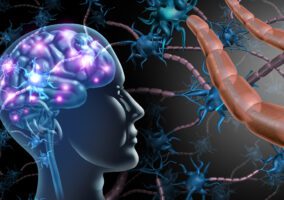Preventing Cluster Headache Recurrence
Natural Relief for the Worst Pain on Earth
Imagine a headache waking you in the middle of the night. The pain is so intense it can only be described as a “a red hot poker being pushed through your right eye and out the back of your head.”
This severe headache may last from minutes to two hours. Nothing you do can relieve it. It goes away as suddenly and mysteriously as it came. In some cases, the exteremly painful headache occur in clusters – usually at the same time every morning and lasts for weeks. Then, it goes away for months or years. It is only on one side, but can switch sides, centering in the eye. Most often the eye tears profusely.
People who have them call them “suicide headaches.” Because it seems like the only way to get pain relief is death. Doctors call them “cluster headaches.” They affect about one person in a thousand, regardless of age. Some get them in childhood, and continue to have them throughout life. While others get them much later in life – even into the 9th decade. Women most commonly get them after age 60. Those who get them assure us it is the worst pain any human can experience – beyond childbirth and kidney stones.Anatomy of a Cluster Headache
Cluster headaches are a problem with the autonomic nervous system. These are the nerves that unconsciously regulate and automate body functions. So you don’t have to think about controlling your temperature, blood pressure, heart, breathing, digestion and so forth.
In cluster headaches, something goes wrong in the sensory nerves of the head. Specifically, the “trigeminal nerve” is affected. There are three branches of this nerve, and people can get pain in any branch. Tooth pain and jaw pain come from the lower branches. But because the eye is so full of sensory nerves, the upper ophthalmic branch of the nerve can cause the worst pain.Cluster headaches may be caused by inflammation of trigeminal nerves off the brainstem behind the eyes. It sends impulses throughout the cranium and face, causing distinctive stabbing, throbbing pain usually felt in one eye.
Studies indicate that because the blood vessels are smaller, the blood supply may be diminished. The lower blood flow may causes headache pain in the nerves.[1] Problems with blood flow are associated with many illnesses such as arthritis, lupus, or other autoimmune diseases. Blood flow is also associated with activation of the hypothalamus, which controls parts of the autonomic nervous system,[2] and even tumors of the pituitary gland.[3]
Cluster Headache Treatment
To relieve the sharp, constant pains triggered by the trigeminal nerve, cluster headache treatments have included:
- Prescription pain medications
- Morphine
- Marijuana
- Sedative drugs
- Cutting the nerve to create constant numbness
Sometimes these work. But amazingly the pain is not relieved by even the strongest prescription pain medications. Until a supply of blood circulation returns and the nerve is working, the pain will not be relieved.
Current cluster treatment and medications include:
Aborting the Current Cluster Attack
- Sumatriptan injections or nasal spray
- Lidocaine
- Capsaiacin
- Ergotamine
Breaking the Cluster
- Corticosteroids (prednisone)
Preventing Clutter Headache Recurrence
- Calcium channel blockers
- Methysergide
- Lithium
- Anti-convulsants
Seeking the Cause of Clutter Headaches
The problem with most research on cluster headaches is the focus on the trigeminal nerve. This is because the trigeminal nerve causes the pain associated with cluster headaches. However, this is like spilling grape juice on the table that runs off onto the white carpet. If you spend all of your time cleaning the carpet every time there is another drop, you will continue to get spots on the carpet. It is most important to clean the table first to stop the dripping!
Ultimately, it is important to find the cause of the headaches. If we know the cause, then we can often fix that and prevent the headaches in the first place. A simple place to start is with imaging of the brain. Several tumors, especially of the pituitary gland, have been associated with cluster headaches. Also, there are some studies that show vascular disease, where arteries are actually splitting apart (dissection), may be associated with these headaches.
If no cause is found in the anatomy of the brain, then we could look to the physiology, or function. Rheumatic diseases such as lupus and rheumatoid arthritis are associated with autonomic nervous system dysfunction. Allergies also may increase inflammation in the body, allowing these headaches. Other cluster headaches contributing factors may include:
- Toxins such as heavy metals (lead, mercury)
- Nutrient deficiencies (magnesium, calcium)
- Metabolic abnormalities (problems with energy production)
- Drug withdrawal, including caffeine and alcohol
Consider the following tests, and apply them appropriately to your situation:
- MRI of the brain with contrast, looking especially at the pituitary and hypothalamus.
- Autoimmune tests for lupus, rheumatoid arthritis, and so forth.
- Metabolic tests (liver, kidney, sugar, electrolytes, and so forth)
- Hormone testing (thyroid, insulin, prolactin, DHEAS, estrogen, progesterone, testosterone)
- Allergy testing (food and environmental IgG, IgE, and IgA blood tests)
- Stool test (comprehensive)
- Nutrient testing (vitamins, minerals)
- Toxin testing (heavy metals, liver detox mechanisms)
- Stress, adrenal, pituitary gland tests (adrenal stress testing with 4 samples of saliva)
As far as getting these done, a general physician can order the first four. The last five require the help of a practitioner who is educated in functional medicine. I get a lot of information from the Genova NUTREVAL FMV test. It has all the vitamins, minerals, amino acids, heavy metals, detox mechanisms, and so forth to test for nutritional deficiencies.
Not everyone needs all the tests. One at a time may help find the cause. If the MRI finds a pituitary tumor, then taking care of that may mean the end of headaches. But if not, further testing may be needed. This is the value of working with a knowledgeable physician who can guide you through the process, and determine where the likely issues are to be found.
Towards a More Natural Treatment
For those who don’t find the cause, or cannot remove it, there are some relatively new, and non-prescription treatments. More cluster headache sufferers are branching out into unorthodox treatments…especially if the prescription pain medications don’t work. People have tried marijuana, with limited success, and LSD with somewhat more success. (Yes, that’s how bad this can be!)
“Magic mushrooms” are one treatment that shows promise.[4] At first there were anecdotal reports of people who said they got pain relief, but now research has shown that indeed, some, but not all, are helped. This seems to work not to abort a current headache, but to stop the cluster from continuing, and prevent any from returning. The cluster headache treatment is done on a monthly, to every three month basis.
Doctors all over the world are now using oxygen[5] to abort a current headache. The way in which oxygen inhalation reduces headache pain is unknown. Oxygen may abort a headache if the onset began quickly and it used just as the headache starts. To treat, pure (100%) oxygen is either given by mask, or in a hyperbaric oxygen (HBOT) chamber. The HBOT for 8 minutes may be more effective. But the treatment is very expensive and requires proximity to a chamber.
Cluster Headache Natural Treatment Recommendations
It may be difficult to know if any treatment is effective because the headaches often disappear for a long time and recurrences are irregular. Anyone who has had one of these headaches knows that you don’t want to wait until it happens to try to abort it. Optimal cluster headache treatment is to prevent it from ever happening again. The following are ways to decrease, prevent, or eliminate cluster headaches. Consider how each might apply to your situation or try them one at a time.- Avoid allergens – if you have allergies.
- Avoid eating foods you are sensitive to. The best way to know your food sensitivities is to do the elimination diet. Eliminate all foods to which you might react and eat only green veggies and bone broth. Then, add foods one at a time every couple of days to see if you have any reaction. This is also one way to discover triggers for cluster headaches.
- Increase sodium by adding salt to food.[6]
- Take Boswellia serrata – 350-700mg three times per day.[7]
- Stress and toxins decrease cause a drop of usable oxygen delivery to the brain. To optimize oxygen availability, take nutrients that aid in transfer of oxygen from blood to tissue. This includes Vitamin D – 10,000 IU per day with the following:[8]
Cluster headaches are so severe that people may also get post-traumatic stress disorder (PTSD) just out of fear of it happening again. These headaches aren’t predictable. They can wake you out of a dead sleep with headache pain so severe that people have resorted to all sorts of devices, including pounding their head against the floor. This is a great motivation to avoid inflammation and allergies, and keep your body as healthy as possible.
Dr. Scott D. Saunders, M.D. is a practicing physician, specializing in preventative health care, who utilizes eclectic health care for the whole family, including conventional, orthomolecular and natural medicine. He is also the medical director of The Integrative Medical Center of Santa Barbara in Lompoc, CA. He went to UCLA medical school and is board certified in family medicine. View natural remedies with Dr. Saunders at: http://drsaundersmd.com





























